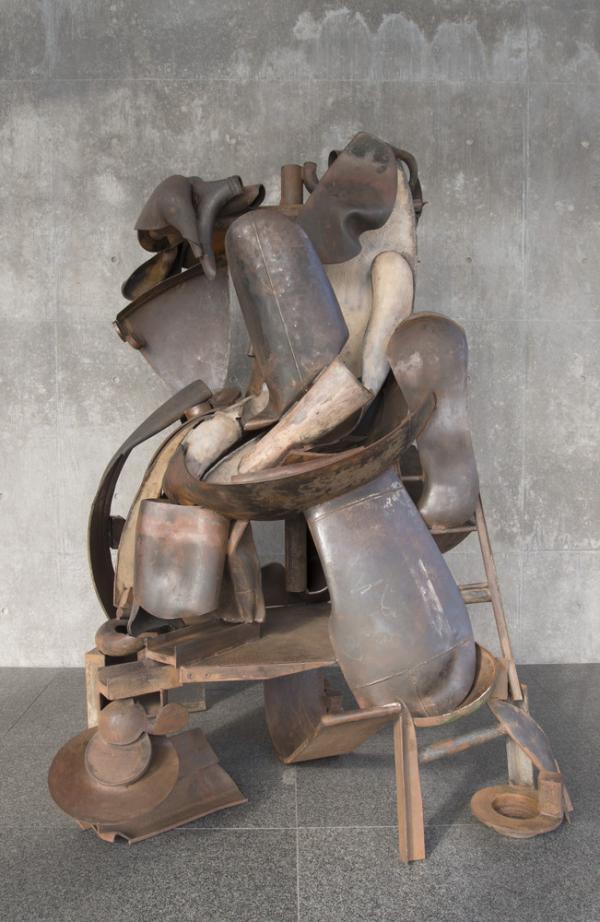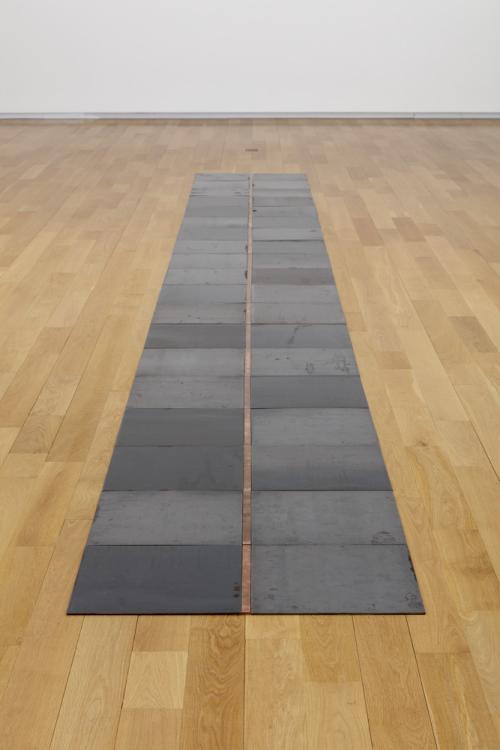Skip to main content
The Descent from the Cross (after Rubens)
Artist
Sir Anthony Caro OM, CBE
(English, 1924-2013)
Date1987-88
MediumSteel, rusted and waxed
DimensionsOverall: 96 x 73 x 63 in. (243.84 x 185.42 x 160.02 cm)
Credit LineCollection of the Modern Art Museum of Fort Worth, Museum purchase, Sid W. Richardson Foundation Endowment Fund
Object number1989.7
Status
Not on viewCopyright© Anthony Caro
Category
Label TextAnthony Caro is known for his abstract welded and painted steel sculptures. It is surprising, therefore, to find him producing a work as referential as The Descent from the Cross (after Rubens), 1987–88. Yet this later work relates to the artist’s ongoing interest in addressing the human body and in pushing the boundaries of abstraction.
Through the 1950s, Caro produced figurative sculpture reflecting the influence of Henry Moore, whom he assisted from 1951 to 1953. By the end of the decade, he grew increasingly dissatisfied and looked to abstraction. Although the body of sculpture Caro produced during the 1970s and 1980s was nonfigurative, it still expressed the bodily dynamics of weight, movement, and energy, even when, as in The Descent from the Cross (after Rubens), he derived his composition from a figurative source.
Peter Paul Rubens’s monumental painting, The Descent from the Cross, 1611–12, was created as the central panel of the altarpiece for the Antwerp Cathedral in Belgium. It portrays the figures with striking colors, dramatic modeling, and theatrical gazes that lead the viewer’s eyes ceaselessly around the composition. Yet Rubens unified the twisting and turning figures by focusing their attention and emotions on Christ and by melding them to the compositional diagonal on which he descends. No doubt Caro was particularly drawn to the energy of these massive bodies. He literally welded forms together to breathe three-dimensional life into Rubens’s two-dimensional image.
The Descent from the Cross (after Rubens) is one of several works Caro produced in the mid- to late 1980s that refer to past artists. His sculptures from this period that pay homage to Édouard Manet, Pablo Picasso, Rembrandt van Rijn, and others align with the contemporary postmodernist interest in appropriation.
Through the 1950s, Caro produced figurative sculpture reflecting the influence of Henry Moore, whom he assisted from 1951 to 1953. By the end of the decade, he grew increasingly dissatisfied and looked to abstraction. Although the body of sculpture Caro produced during the 1970s and 1980s was nonfigurative, it still expressed the bodily dynamics of weight, movement, and energy, even when, as in The Descent from the Cross (after Rubens), he derived his composition from a figurative source.
Peter Paul Rubens’s monumental painting, The Descent from the Cross, 1611–12, was created as the central panel of the altarpiece for the Antwerp Cathedral in Belgium. It portrays the figures with striking colors, dramatic modeling, and theatrical gazes that lead the viewer’s eyes ceaselessly around the composition. Yet Rubens unified the twisting and turning figures by focusing their attention and emotions on Christ and by melding them to the compositional diagonal on which he descends. No doubt Caro was particularly drawn to the energy of these massive bodies. He literally welded forms together to breathe three-dimensional life into Rubens’s two-dimensional image.
The Descent from the Cross (after Rubens) is one of several works Caro produced in the mid- to late 1980s that refer to past artists. His sculptures from this period that pay homage to Édouard Manet, Pablo Picasso, Rembrandt van Rijn, and others align with the contemporary postmodernist interest in appropriation.








